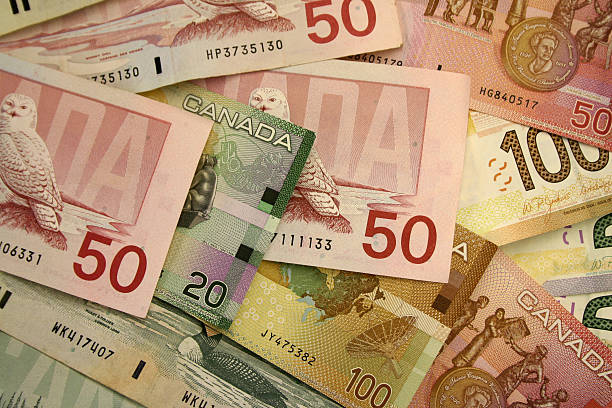
USD/CAD attracts some sellers to around 1.4410 in Monday’s late American session, down 1.09% on the day.
Trump confirmed the postponement of his Canada tariffs.
US ISM Manufacturing PMI bested the estimates in January.
The USD/CAD pair tumbles to near 1.4410 during the late American session on Monday. The Canadian Dollar (CAD) rebounds after falling to a level not seen since 2003, as US President Donald Trump confirmed the postponement of his Canadian tariffs in a post on Truth Social.
Late Monday, Trump said that he will pause for one month new 25% tariffs on goods entering the United States from Mexico and Canada. The announcement came two days after Trump slapped 25% tariffs on goods from Mexico and Canada and 10% tariffs on goods imported from China. The Loonie attracts some buyers in an immediate reaction to this headline.
On the other hand, the upbeat US economic data could provide some support to the US Dollar (USD). Data released by the Institute for Supply Management (ISM) on Monday showed that the Manufacturing PMI rose to 50.9 in January from 49.3 in December. This reading came in better than the estimation of 49.8. Traders will take more cues from the Fedspeak. Federal Reserve (Fed) Raphael Bostic and Mary Daly are set to speak later on Tuesday.
According to the CME FedWatch tool, markets reduce expectations of rate cuts from the Fed in the wake of the tariff news, with futures pricing in just a 50% odds of two cuts this year. This, in turn, might underpin the Greenback in the near term.
Canadian Dollar FAQs
The key factors driving the Canadian Dollar (CAD) are the level of interest rates set by the Bank of Canada (BoC), the price of Oil, Canada’s largest export, the health of its economy, inflation and the Trade Balance, which is the difference between the value of Canada’s exports versus its imports. Other factors include market sentiment – whether investors are taking on more risky assets (risk-on) or seeking safe-havens (risk-off) – with risk-on being CAD-positive. As its largest trading partner, the health of the US economy is also a key factor influencing the Canadian Dollar.
The Bank of Canada (BoC) has a significant influence on the Canadian Dollar by setting the level of interest rates that banks can lend to one another. This influences the level of interest rates for everyone. The main goal of the BoC is to maintain inflation at 1-3% by adjusting interest rates up or down. Relatively higher interest rates tend to be positive for the CAD. The Bank of Canada can also use quantitative easing and tightening to influence credit conditions, with the former CAD-negative and the latter CAD-positive.
The price of Oil is a key factor impacting the value of the Canadian Dollar. Petroleum is Canada’s biggest export, so Oil price tends to have an immediate impact on the CAD value. Generally, if Oil price rises CAD also goes up, as aggregate demand for the currency increases. The opposite is the case if the price of Oil falls. Higher Oil prices also tend to result in a greater likelihood of a positive Trade Balance, which is also supportive of the CAD.
While inflation had always traditionally been thought of as a negative factor for a currency since it lowers the value of money, the opposite has actually been the case in modern times with the relaxation of cross-border capital controls. Higher inflation tends to lead central banks to put up interest rates which attracts more capital inflows from global investors seeking a lucrative place to keep their money. This increases demand for the local currency, which in Canada’s case is the Canadian Dollar.
Macroeconomic data releases gauge the health of the economy and can have an impact on the Canadian Dollar. Indicators such as GDP, Manufacturing and Services PMIs, employment, and consumer sentiment surveys can all influence the direction of the CAD. A strong economy is good for the Canadian Dollar. Not only does it attract more foreign investment but it may encourage the Bank of Canada to put up interest rates, leading to a stronger currency. If economic data is weak, however, the CAD is likely to fall.
* The content presented above, whether from a third party or not, is considered as general advice only. This article should not be construed as containing investment advice, investment recommendations, an offer of or solicitation for any transactions in financial instruments.


